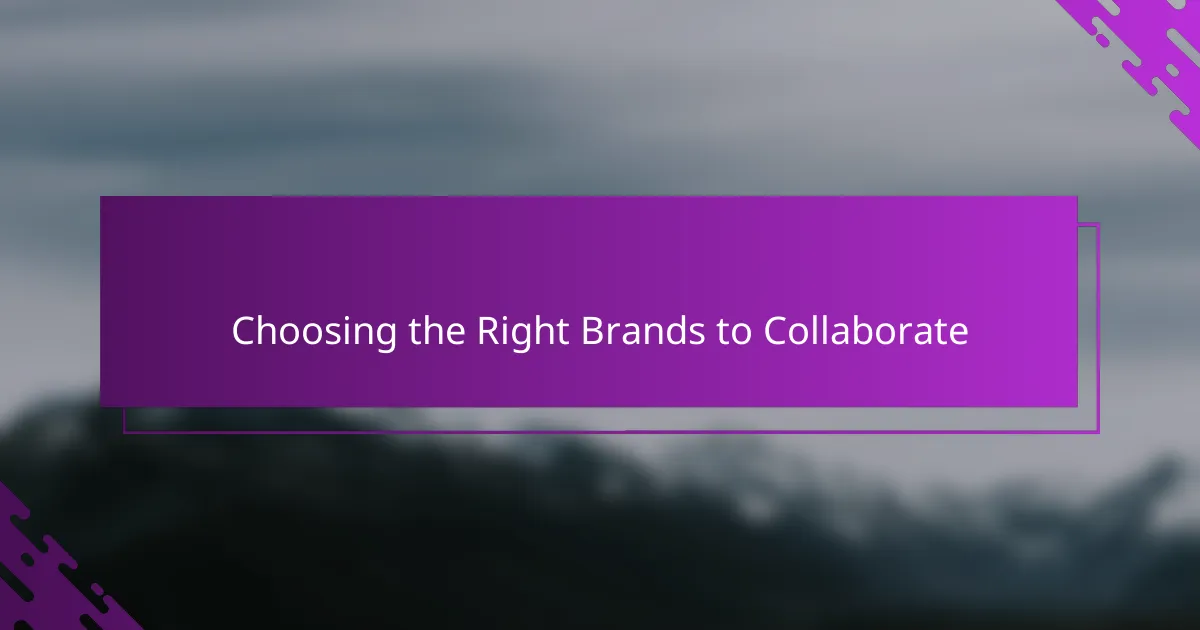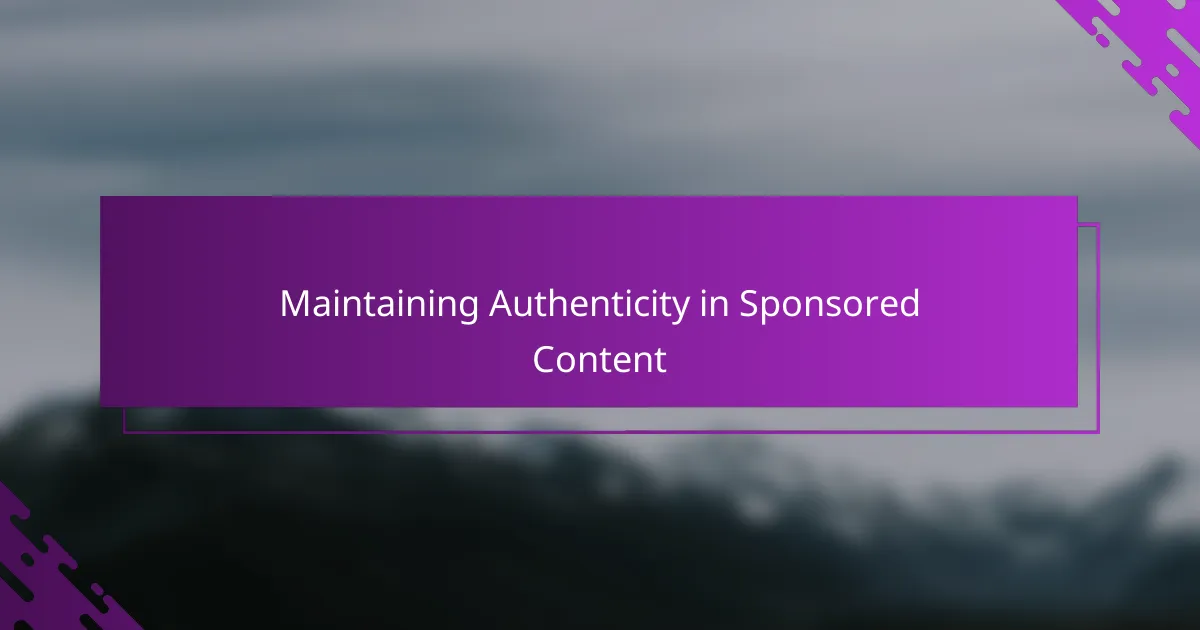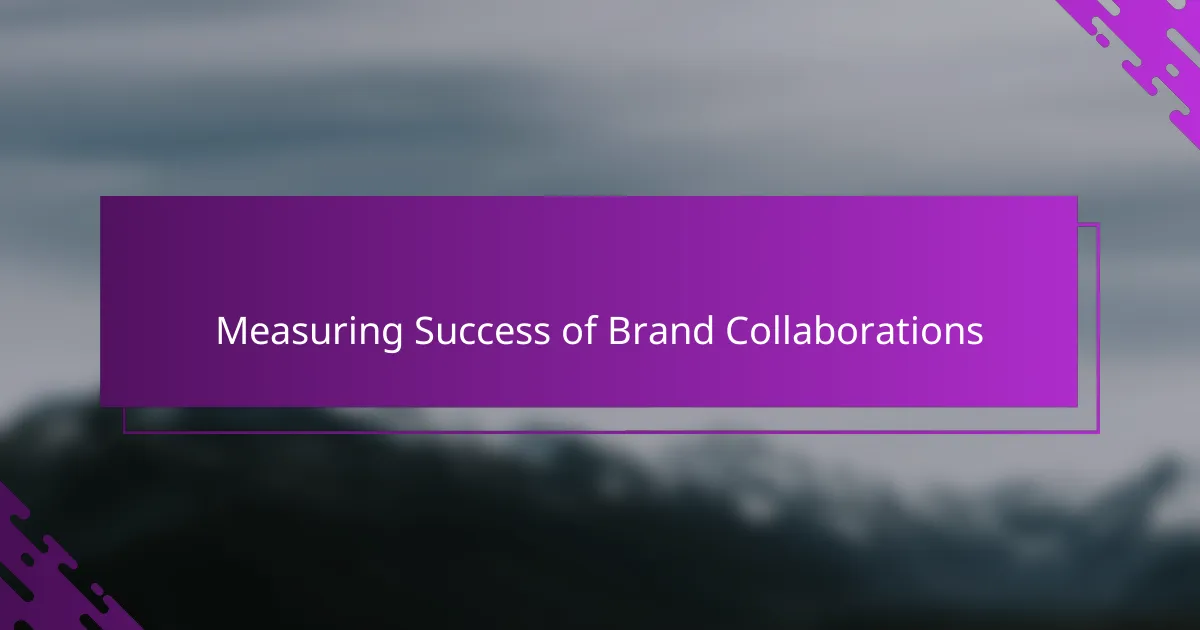Key takeaways
- Sponsored posts should weave a genuine story that reflects both the blogger’s voice and the brand’s message to create authentic content.
- Selecting brands that align with personal values enhances credibility and trust with the audience, leading to more meaningful collaborations.
- Setting clear goals for sponsored content is essential for focused storytelling and aligning expectations between bloggers and brands.
- Measuring success involves evaluating both qualitative engagement and quantitative metrics, ensuring that collaborations resonate authentically with the audience.

Understanding Sponsored Posts in Blogging
Sponsored posts became a turning point in my blogging journey—they’re not just about promoting a product but about weaving a story that feels genuine. Have you ever wondered how to stay true to your voice while working with brands? That’s the challenge many bloggers face when crafting these posts.
From my experience, understanding the fine line between sponsored content and authentic sharing is crucial. It’s about creating value for your audience without sounding like a walking advertisement. When I first started, I struggled with this balance, but learning to integrate my personal experience with the brand’s message made a world of difference.
What I’ve realized is that sponsored posts are a partnership, not a transaction. They require mutual trust and respect between the blogger and the brand, which shines through when the content resonates honestly. This mindset shift changed how I approached collaborations, making them more rewarding both creatively and professionally.

Benefits of Brand Collaborations
One of the biggest benefits I discovered from brand collaborations is the opportunity to expand my reach. When a well-aligned brand shares my content, it introduces me to new audiences who might not have found my blog otherwise. Have you ever noticed how quickly your community grows when you partner with the right people? That kind of exposure is invaluable and feels like a genuine vote of confidence in your work.
Another advantage I appreciate is the creative freedom that comes with trusted collaborations. Early on, I feared sponsored posts would box me in, but working closely with brands allowed me to tailor the message in ways that stayed true to my style. It’s empowering to know that these partnerships can enhance your storytelling rather than stifle it.
Lastly, I can’t overstate how rewarding it is to gain financial support through brand collaborations. Blogging can be unpredictable income-wise, and having reliable partnerships brings a sense of stability. Beyond the paycheck, it’s meaningful to feel that my voice and content have value in the marketplace—something every blogger strives for.

Setting Goals for Sponsored Content
Setting clear goals for sponsored content has been a game-changer for me. Without defined objectives, it’s easy to lose sight of what both I and the brand hope to achieve. Have you ever jumped into a collaboration unsure of what success actually looks like? That uncertainty can make the process feel chaotic and less fulfilling.
When I started setting specific goals—like increasing brand awareness, driving engagement, or simply sharing a personal story—I noticed my content became sharper and more intentional. It’s amazing how having a clear target influences the tone and structure of a post. In one collaboration, focusing on educating my readers rather than just selling the product actually sparked more genuine conversations in the comments.
I also make it a point to align my goals with the brand’s expectations early on. This alignment builds trust and ensures we’re both working toward something meaningful. From experience, the best sponsored posts happen when we share common goals and open communication. Have you tried this approach? It’s a simple step that really enhances the entire collaboration process.

Choosing the Right Brands to Collaborate
Choosing the right brands to collaborate with has been pivotal in maintaining my blog’s authenticity. I ask myself: Does this brand genuinely align with my values and resonate with my audience? When the answer is yes, the partnership feels natural and the sponsored content flows effortlessly.
I remember a time when I took on a collaboration just for the paycheck, without much consideration for brand fit. The post fell flat—not because the product was bad, but because it didn’t reflect my voice or interests. That experience taught me to be selective and prioritize brands that inspire me personally.
Sometimes, it’s tempting to say yes to every opportunity, but I’ve learned that turning down mismatched brands is actually empowering. It preserves my credibility and shows respect for my readers. After all, trust is the foundation of an engaged community, and choosing partners wisely keeps that trust intact.

Structuring Your Sponsored Post Effectively
When structuring a sponsored post, I always start by identifying the core message that aligns both with my experience and the brand’s goals. Have you noticed how a clear, focused narrative keeps readers hooked? It’s like telling a story where the product naturally becomes part of the conversation—not an interruption.
I found that breaking the content into digestible sections makes a big difference. For instance, I typically introduce the product through a personal anecdote, then highlight its benefits, and wrap up with a genuine call to action. This flow feels organic and respects my readers’ time and attention, which builds trust rather than pushing a hard sell.
One mistake I learned to avoid was overloading the post with brand jargon or forced endorsements. Instead, I ask myself, “Would I recommend this if it weren’t sponsored?” If the answer is yes, I let my enthusiasm guide the tone. Authenticity, after all, is what turns a sponsored post from a mere advertisement into valuable content.

Maintaining Authenticity in Sponsored Content
Authenticity is the heartbeat of any sponsored post I create. I often ask myself, “Am I sharing this because I genuinely believe in it, or just because it’s a paid collaboration?” When doubt creeps in, I remember the disconnect I felt during an early partnership that didn’t align with my values—it taught me that being honest with both myself and my audience is non-negotiable.
I try to keep my voice front and center, weaving my true opinions and experiences throughout the post. Readers can sense when something feels forced or scripted, which is why I avoid buzzwords or over-polished language. Instead, I rely on genuine stories and honest feedback to build trust, making the content feel like a conversation rather than a sales pitch.
Sometimes, it’s tempting to soften a criticism or exaggerate benefits to please the brand. But I’ve learned that transparency actually strengthens my relationship with both my audience and the collaborators. After all, people appreciate when you respect their intelligence and give them the full picture, even if it means pointing out what could be better. Doesn’t that honesty make your recommendations more powerful?

Measuring Success of Brand Collaborations
Measuring the success of brand collaborations isn’t just about tracking clicks or likes—I’ve found that digging deeper reveals so much more. For example, when I noticed a surge in thoughtful comments and messages after a post, it told me my audience was genuinely connecting with the content, not just skimming past it. Have you ever felt that moment when engagement feels meaningful rather than just numerical? That’s when I know a collaboration truly hit the mark.
Of course, I rely on concrete metrics too, like tracking referral traffic or conversion rates provided by the brand. But even those numbers need context; a high click-through rate means little if my readers don’t feel that the partnership reflects my authentic voice. I remind myself that success comes from blending measurable results with audience trust.
Sometimes I review long-term impact, wondering if a collaboration sparked ongoing interest or changes in my community’s perception. Did that sponsored story make readers come back or share it with friends? Measuring success feels like storytelling itself—a balance of data and human connection that keeps both me and my brand partners inspired.
